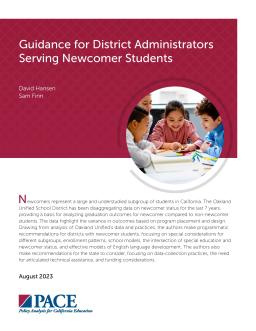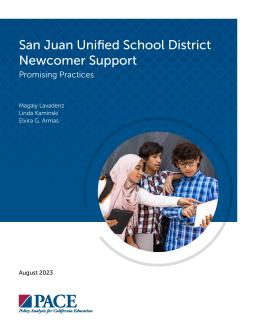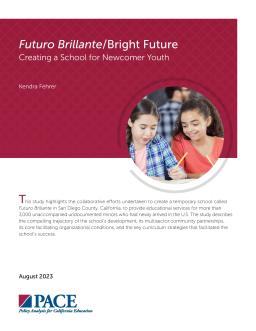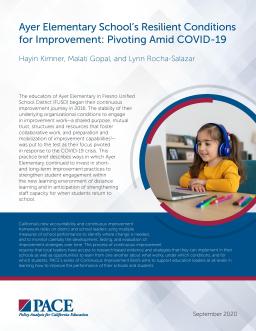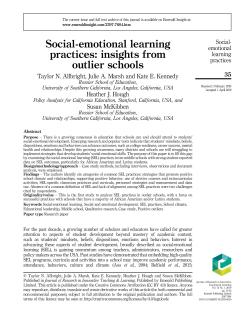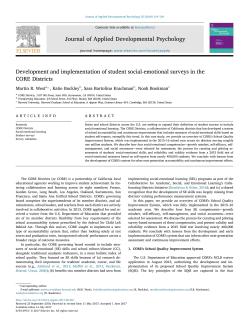Published
Summary
Newcomers represent a large and understudied subgroup of students in California. The Oakland Unified School District has been disaggregating data on newcomer status for the last 7 years, providing a basis for analyzing graduation outcomes for newcomer compared to non-newcomer students. The data highlight the variance in outcomes based on program placement and design. Drawing from analysis of Oakland Unified’s data and practices, the authors make programmatic recommendations for districts with newcomer students.
Lessons From Oakland International High School
Published
Summary
Oakland International High School, winner of the 2017 National Community School Award, supports its recently arrived immigrant students by integrating academic, social, mental health,and material supports into the school day and beyond. Its community school model incorporates a Wellness Center, a tiered system of support and engagement, external partnerships, specialized staffing, and a collaborative culture of continuous improvement that promotes agency and belonging for both students and staff.
Promising Practices
Published
Summary
This case study identifies promising practices for newcomer education implemented in San Juan Unified School District (SJUSD), one of 12 local educational agencies (LEAs) funded under the California Newcomer Education and Well-Being (CalNEW) project between 2018 and 2021. This report was developed through a partnership between PACE and the Center for Equity for English Learners (CEEL) at Loyola Marymount University (LMU).
Creating a School for Newcomer Youth
Published
Summary
This study highlights the collaborative efforts undertaken to create a temporary school called Futuro Brillante in San Diego County, California, to provide educational services for more than 3,000 unaccompanied undocumented minors who had newly arrived in the U.S. The study describes the compelling trajectory of the school’s development, its multisector community partnerships, its core facilitating organizational conditions, and the key curriculum strategies that facilitated the school’s success.
Pivoting Amid COVID-19
Published
Summary
This brief outlines Ayer Elementary's journey of continuous improvement since 2016 and how their organizational conditions were tested during the COVID-19 crisis. Despite the challenges, the school invested in improvement practices to strengthen student engagement in distance learning and build staff capacity for when students return to school.
Insights from Outlier Schools
Published
Summary
This paper explores social-emotional learning (SEL) practices in ten middle schools and their impact on students' outcomes. Despite the growing recognition of the importance of SEL, many schools struggle to implement effective strategies. The paper focuses on schools with strong student-reported data on SEL outcomes, particularly for African American and Latinx students.
Published
Summary
States and school districts across the U.S. are seeking to expand their definition of student success to include social-emotional learning. The CORE Districts, a collaborative of California districts that has developed a system of school accountability and continuous improvement that includes measures of social-emotional skills based on student self-reports, exemplify this trend. In this case study, we provide an overview of CORE's School Quality Improvement System, which was implemented in the 2015–16 school year across six districts serving roughly one million students.
